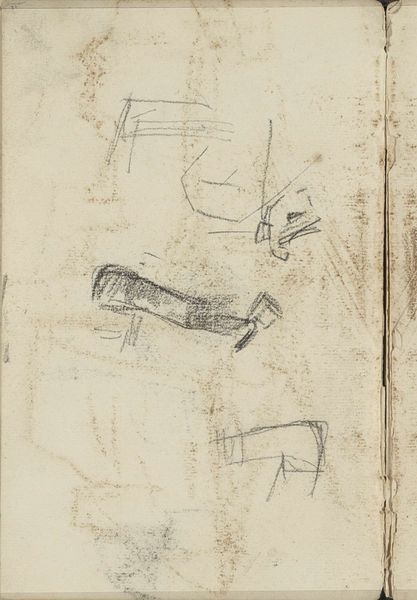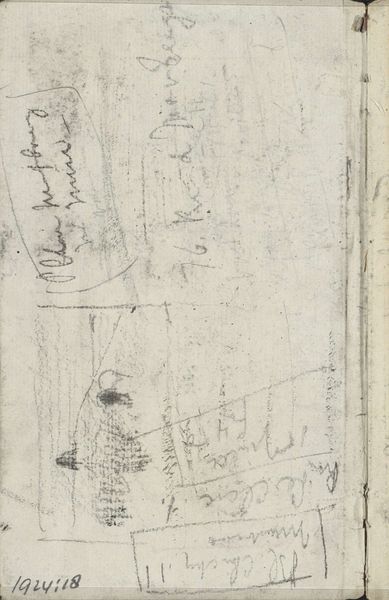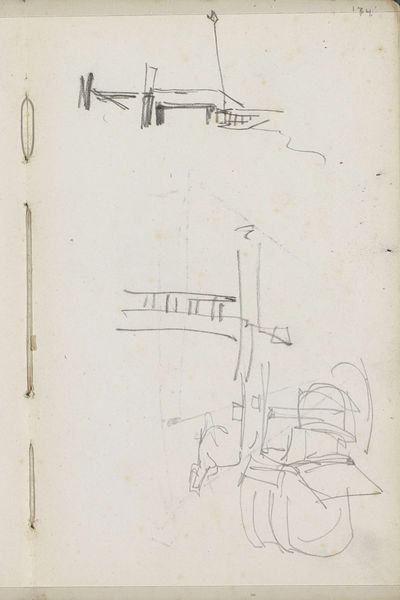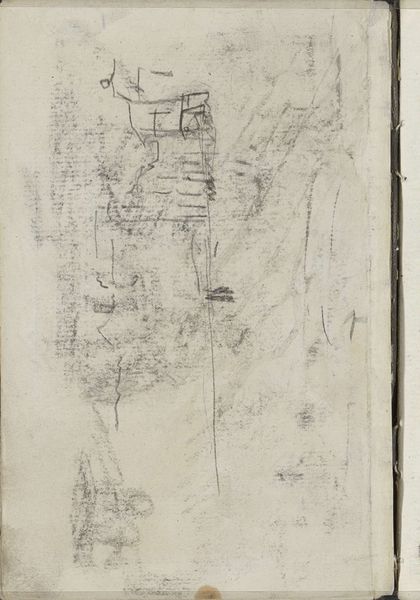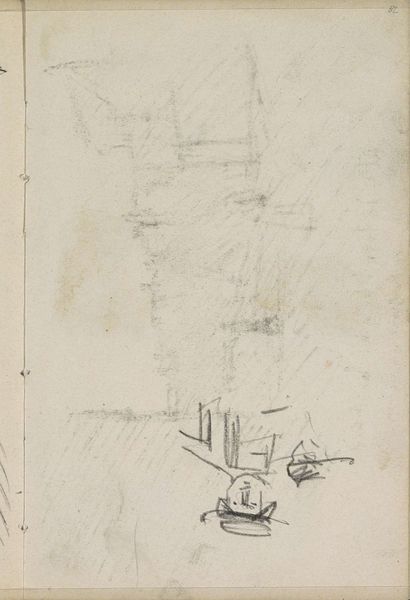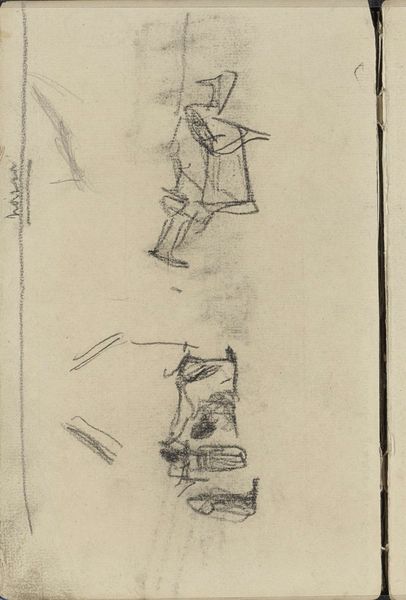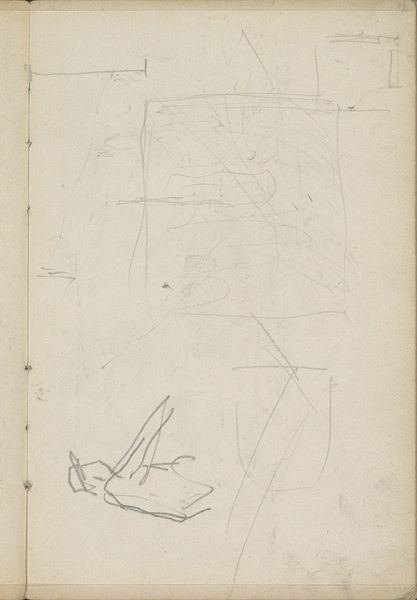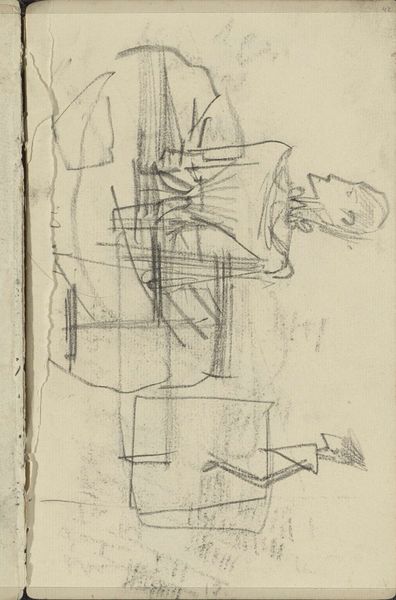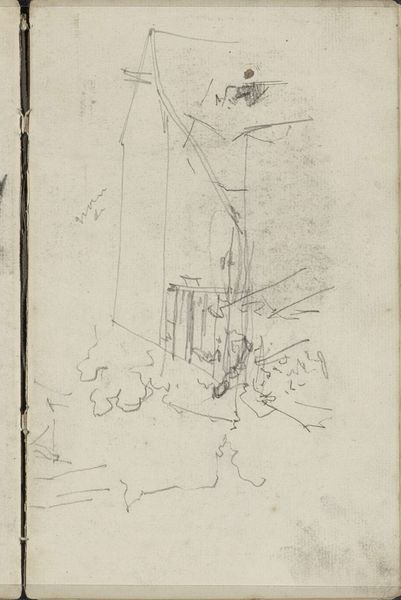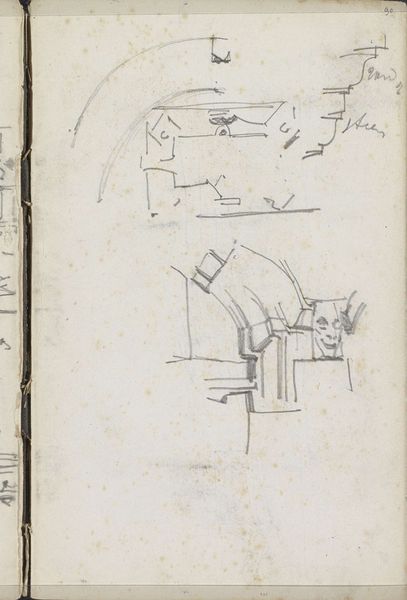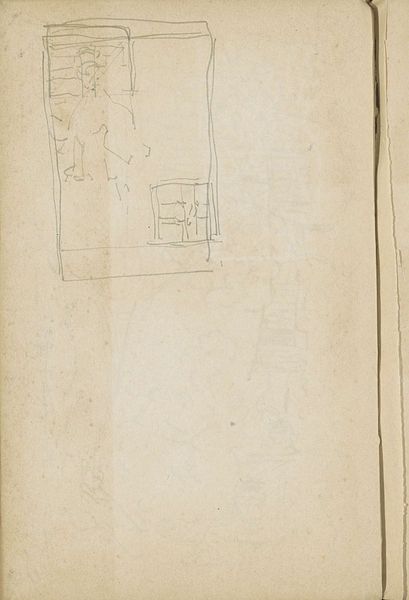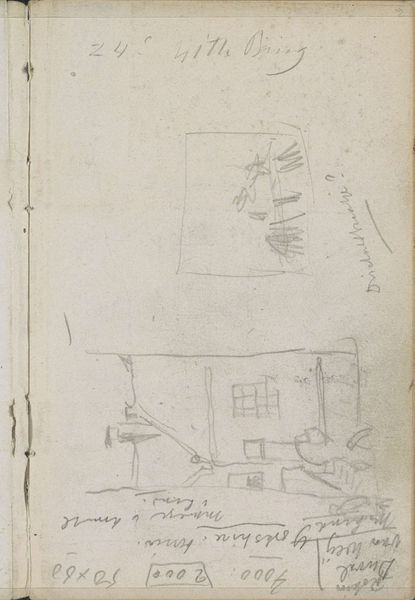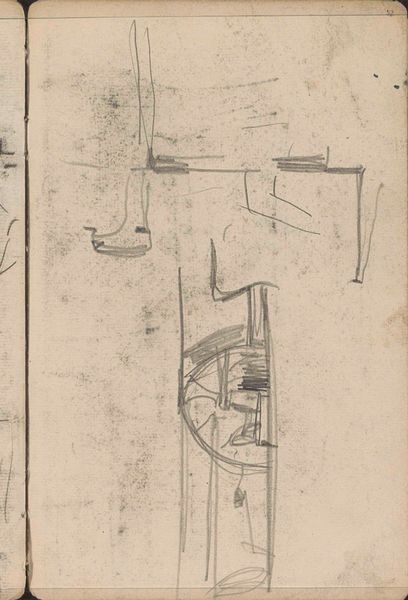
drawing, paper, pencil
#
portrait
#
drawing
#
amateur sketch
#
aged paper
#
toned paper
#
light pencil work
#
impressionism
#
pencil sketch
#
sketch book
#
incomplete sketchy
#
paper
#
personal sketchbook
#
pencil
#
sketchbook drawing
#
sketchbook art
#
realism
Copyright: Rijks Museum: Open Domain
Curator: The piece before us, "Staande Vrouw," or "Standing Woman," is a pencil drawing executed by George Hendrik Breitner sometime between 1884 and 1886. It's currently held here at the Rijksmuseum. Editor: There's an immediacy to it. A fleeting glimpse, almost like a half-remembered dream captured quickly on paper. The unfinished quality evokes a particular mood. Curator: It is very much a sketch, and given the informal nature, it likely came from one of his sketchbooks. You can almost imagine Breitner pausing in the middle of a bustling Amsterdam street, rapidly trying to capture a pose, a gesture. Editor: Note how the upper sketch is quite detailed, while the one below has been worked out very roughly. It reminds me of those societal roles women held at the time; there are restrictions evident, yet they are often incomplete in their execution. I see many similar societal sketches still happening today! Curator: Interesting you pick up on the sketch element. In Breitner’s work, you often find this blend of observation and recording. His urban scenes, especially, reflect a similar documentary impulse. It isn't about creating idealized forms but capturing a specific moment. His method allowed for capturing an honest, spontaneous, lived reality of the people. Editor: What stands out is the contrast between the clear outlines above and the ghostly suggestions of human forms below. It almost feels as if we're looking at layers of consciousness – or perhaps, layers of societal expectations weighing down on this woman. Curator: Exactly, it highlights the performative aspect of social life and individual experience within particular spaces. It may be an unassuming sketch but the layers have plenty to tell those that will stop to consider them! Editor: Seeing it this way highlights not just what's there, but what isn't. The empty spaces invite speculation and inject an emotional layer that a highly-detailed drawing may lack. Curator: Absolutely. In that emptiness, there's space for interpretation, for empathy, allowing the artwork to connect with different observers on different levels. It's that aspect which continues to offer new dimensions, long after Breitner set down his pencil.
Comments
No comments
Be the first to comment and join the conversation on the ultimate creative platform.
